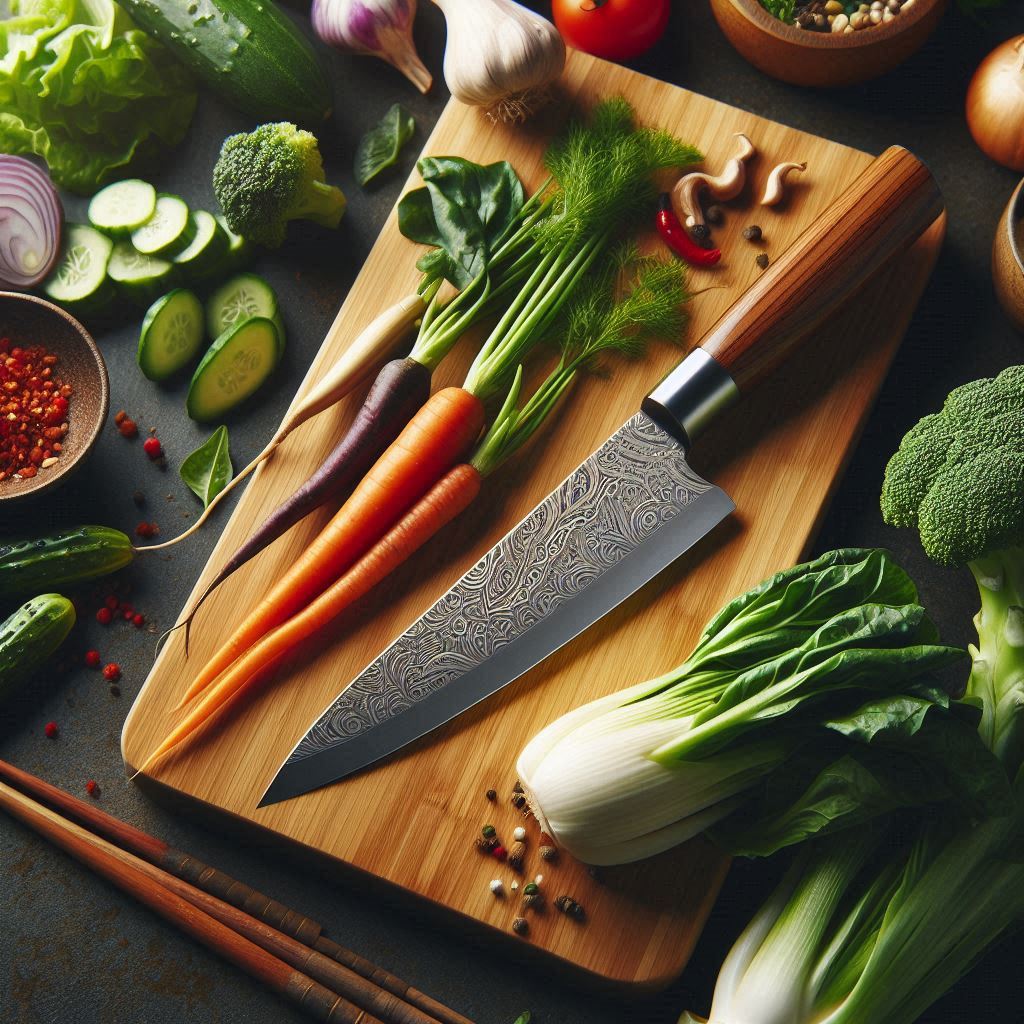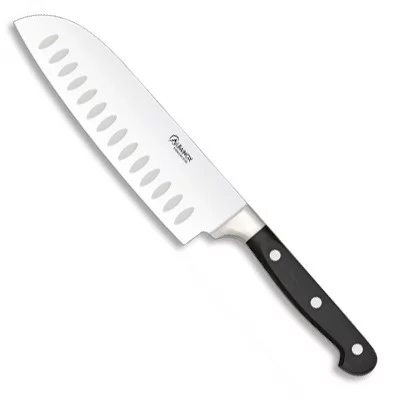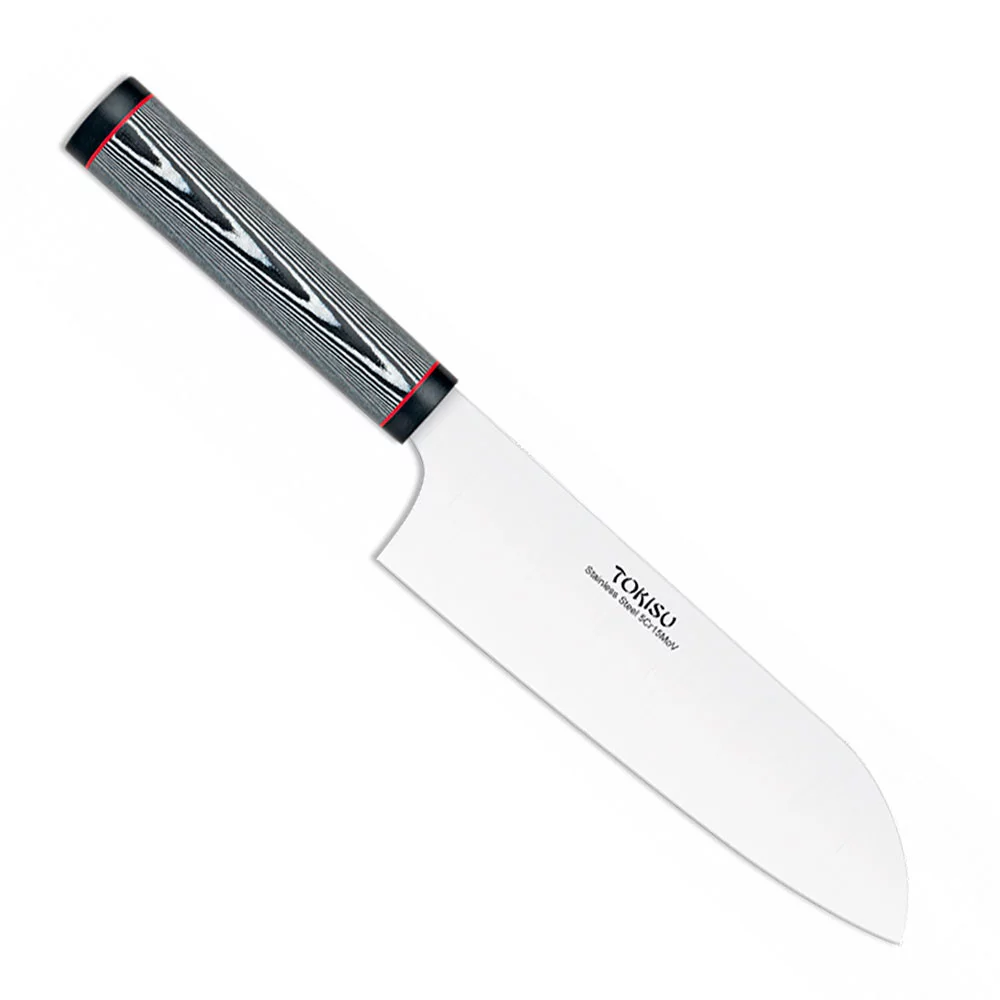What is a Santoku Knife?
The Santoku knife is a highly renowned kitchen tool, originating from Japan, which has gained popularity in kitchens around the world thanks to its versatility and efficiency. Its name, "Santoku", translates to "three virtues" or "three uses", referring to its three main functions: slicing, dicing, and mincing.
Origin and Meaning
This Japanese knife is often compared to the Western chef's knife, though it is characterized by being shorter and lighter. Its design reflects Japanese culinary tradition and its focus on precise food preparation, highlighting its use for meat, fish, and vegetables.
Distinctive Features
- Blade Design: The Santoku blade is generally straight and without a tip, resulting in more controlled cuts.
- Length: The blade usually measures between 13 and 20 cm, with the most common being 16 to 18 cm.
- Grantons: Many models feature air pockets that help prevent food from sticking to the blade during cutting.

Materials and Care
Santoku knives can be made from various materials, notably:
- Stainless Steel: Ideal for those seeking low maintenance.
- Carbon Steel: Offers impressive sharpness, although it requires more care.
- Ceramic: Lightweight and durable, but with less versatility.
To maintain its quality, avoid washing it in the dishwasher. It is recommended to use a protective sheath called "saya" to prolong its life.

Purchase Tips
If you are considering buying a Santoku knife, keep in mind:
- Material Quality: Opt for high-quality Japanese steel, such as VG10.
- Ergonomics: A well-designed handle enhances the user experience.
- Budget: Prices vary, from more economical models to premium options that can exceed 200 €.

















